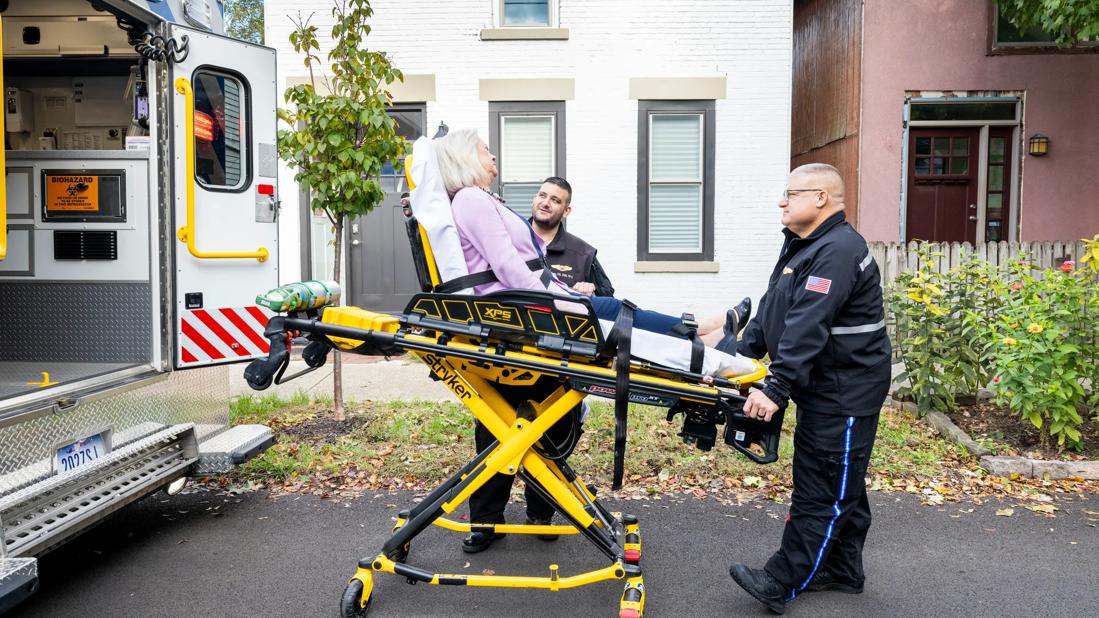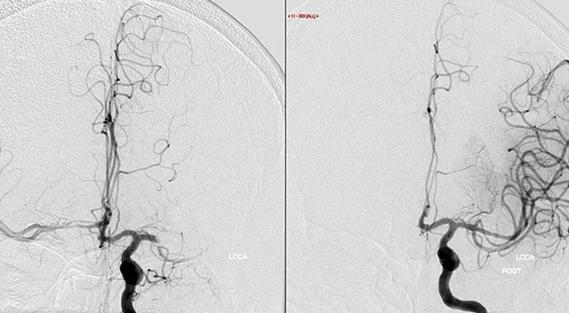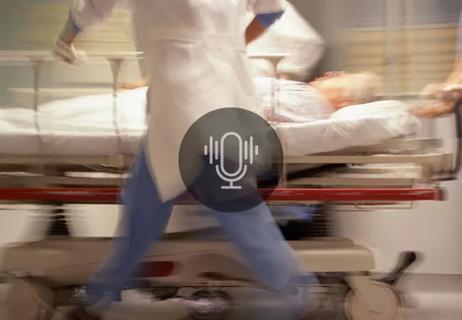Times to target blood pressure, CT and medication administration shorter than with EMS transport

For patients with acute intracerebral hemorrhage (ICH), care in a mobile stroke treatment unit (MSTU) results in shorter time to target systolic blood pressure (BP), CT scan completion and medication administration. So finds a retrospective study presented by Cleveland Clinic researchers at the 2024 International Stroke Conference.
Advertisement
Cleveland Clinic is a non-profit academic medical center. Advertising on our site helps support our mission. We do not endorse non-Cleveland Clinic products or services. Policy
“The faster time metrics for MSTUs documented in our five-year study indicate a hypothetical benefit toward improved outcomes for patients with ICH,” notes study co-author and Cleveland Clinic vascular neurologist A. Blake Buletko, MD. “Although MSTUs have been shown to facilitate better outcomes in acute ischemic stroke, this is the first direct comparison between MSTUs and conventional EMS in ICH.”
Cleveland Clinic deployed the second MSTU in the United States in 2014. Since then, the Cleveland Pre-Hospital Acute Stroke Treatment group has reported significant reductions in time to treatment for acute ischemic stroke with the unit compared with management in traditional emergency department (ED) settings.
That’s because the MSTU brings the ED — and all steps typically done in it — to a patient’s doorstep, including assessment, CT angiography and thrombolysis or anticoagulation reversal. A vascular neurologist evaluates each patient via telemedicine, and a neuroradiologist and vascular neurologist remotely assess images obtained by the MSTU CT scanner.
“For hemorrhagic stroke, we can control BP and at times administer anticoagulation reversal agents to applicable patients,” says Dr. Buletko. “With an MSTU, we can also triage patients with ICH and ensure they are transported to a hospital equipped to appropriately manage them.”
In the MSTU, a CT typically is obtained within eight minutes of patient intake, whereas during that time window with transport by any other means, most individuals would still be on their way to the ED. That efficiency has critical clinical value because 1.9 million neurons are lost for every minute a stroke patient’s brain tissue is deprived of blood flow.
Advertisement
The retrospective analysis included 146 MSTU patients and 221 EMS patients treated for acute ICH at two tertiary institutions — Cleveland Clinic and Stony Brook Medicine, Stony Brook, New York — between January 2018 and December 2022. Patients in the EMS cohort included only those seen between 8 a.m. and 8 p.m., to match the operating hours of the MSTU at both institutions. Baseline demographics were similar in the two cohorts.
The primary endpoint was time to treatment, as measured by a goal systolic BP of less than 160 mmHg. Categorical values and continuous values were statistically analyzed.
In the MSTU cohort, median initial BP was 190/99 mmHg and fell to 157/80 upon arrival at the hospital. Initial systolic BP was significantly lower in the MSTU cohort than in the EMS cohort (157 vs. 166 mmHg; P = 0.011).
More than three-quarters (77%) of the MSTU patients received antihypertensive medication while being transported. For the MSTU cohort, times from door to CT completion (14 vs. 33 minutes; P = 0.000), anticoagulation reversal (99 vs. 139 minutes; P = 0.013), administration of antihypertensive medication (21 vs. 45 minutes; P = 0.020) and goal BP (35 vs. 51 minutes; P = 0.000) all were significantly shorter than for the EMS cohort.
“Our results underscore that time to CT scan, time to receiving appropriate medications and time to getting to goal BP are shorter for ICH patients treated in an MSTU when compared with patients transported via conventional EMS,” says Dr. Buletko. “What we still need to determine is whether getting care to these patients faster improves their outcomes at three months or beyond.”
Advertisement
No direct comparisons of ICH outcomes in patients treated in an MSTU versus an ED have yet been published. Cleveland Clinic researchers recognize that’s a large gap in the literature and one they hope to help fill with a subsequent research study.
“We believe we’ll find that the MSTU is clinically impactful for ICH because by the time patients hit the hospital, they’ve had a CT scan, an evaluation by a neurologist on video and appropriate treatment,” Dr. Buletko concludes. “Being able to administer reversal agents to patients on anticoagulants while they are en route to the ED is impactful because hematoma expansion is associated with worse ICH outcomes.”
"This is an exciting new era of pre-hospital stroke medicine," adds the study's presenting author, Andrew Zhang, MD, a stroke fellow at Cleveland Clinic. "I’m looking forward to how we can continue to explore the benefits of MSTUs."
Advertisement
Advertisement

Increasing treatment options are extending the window for continued functional gains

Study links large artery atherosclerosis and delayed presentation to poorer treatment results

$3.2 million grant will fund use of calcium-based imaging to record neuronal activity in ischemia model

Findings from large cohort analysis can guide ongoing quality improvement initiatives

Insights and what’s next for the first U.S. mobile stroke unit to treat patients

Research to test clinical efficacy and cost-effectiveness versus standard-of-care rehab

Many patients unnecessarily continue the medications for years

AHA scientific statement offers best practices to improve care for high-risk populations